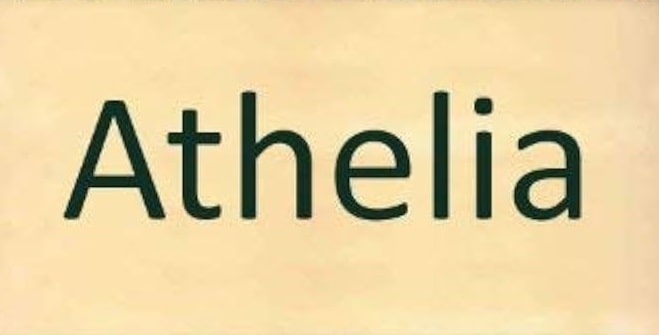Athelia is a condition where someone is born without one or both nipples on their chest. Although this health problem is considered rare overall, it is more common in children who are born with conditions such as Poland syndrome and ectodermal dysplasia.
Athelia manifests differently, depending on the condition causing it. Typically, people with athelia lose their nipples and areolas (the colored ring around the nipple). The nipples themselves may be absent on one or both sides of the body.
People with Poland syndrome may be born without both breasts, nipples, and areola on one side. The absence of one or both breasts is a condition called amastia.
Causes of Athelia
Athelia is a rare condition that does not stand alone but is caused by other rare conditions or diseases. Causes of athelia include:
1. Poland Syndrome
Poland syndrome is a rare disorder of fetal development that affects 1 in 20,000 babies. Medical research is still unable to determine the main cause of this syndrome. However, researchers suspect that Poland syndrome is caused by problems with the fetus’ blood circulation during the sixth week.
This syndrome is thought to affect the arteries that supply blood to the chest area. This lack of blood supply is what prevents the chest from growing normally. Another cause that can be said to be quite rare is genetic factors. Research conducted by plastic surgeons at the University of Montreal, Canada shows that Poland syndrome can be passed down to the next generation.
It is said that the muscles on one side of the body of a baby with this syndrome do not develop perfectly while in the womb. In fact, the muscles do not develop at all. As a result, at birth, people with Poland syndrome have imperfections in:
- Chest muscle or pectoralis major.
- Rib.
- Breasts and nipples.
- Fingers attached to one hand.
- Shorter upper arm bones.
- Sparse armpit hair.
2. Ectodermal Dysplasia
Ectodermal dysplasia is one of 180 disorders that affect the ectoderm, the tissue outside the embryo that supports the formation of skin, sweat glands, teeth, hair, and nails in the fetus.
This is why babies with ectodermal dysplasia are at risk of not having nipples. In addition to athelia, other symptoms of ectodermal dysplasia include:
- Thin hair.
- Teeth that are missing or grow in an unusual shape.
- Hypohidrosis or inability to sweat.
- Lack of ability to see or hear.
- Growth abnormalities in fingers or nails.
- Cleft lip.
- Unusual skin color.
- Difficulty breathing.
The cause of ectodermal dysplasia itself is a genetic mutation and this disorder can be passed down to children and subsequent generations.
Meanwhile, various other conditions that can cause athelia in babies include:
- Progeria syndrome. This condition causes people to age very quickly.
- Yunis Varon syndrome . A rare congenital condition affecting the face, chest, and other parts of the body.
- Scalp-ear-nipple syndrome. This condition causes hairless patches to form on the scalp, underdeveloped ears, and missing nipples or breasts on both sides.
- Al-Awadi-Rass-Rothschild syndrome. A rare, inherited genetic condition that occurs when bones form improperly.
Risk Factors for Athelia
A child is more likely to be born with athelia if one of his or her parents has the condition that causes it. Poland syndrome is more common in boys than girls, but ectodermal dysplasia affects males and females equally.
Athelia is not the same as amastia, which is a condition where an entire breast is missing. However, it is possible for the two conditions to occur together. In rare cases, girls with Poland syndrome can have amastia, where the entire breast and nipple on the affected side of the body are missing.
Athelia Treatment
In fact, athelia does not require special treatment, unless the loss of the nipple makes you disturbed and uncomfortable in appearance. If you lose all your breasts, you can undergo reconstruction surgery using tissue from your stomach, buttocks, or back. Meanwhile, the nipple and areola can be made during other procedures.
In order to create a nipple, a specialist will shape the tissue. If desired, you can tattoo the shape of the areola on your skin. Undergoing a 3D tattoo procedure using an oscillating needle coated with pigment may be an effective way to create a more three-dimensional and realistic nipple.
How medically it affects each individual depends on which condition is causing the athelia. Mild Poland syndrome may not cause any health problems, but it can also cause the opposite. More severe cases can affect organs, such as the lungs or kidneys, which can lead to complications.
Athelia Complications
The loss of the nipple itself does not actually cause complications. However, some conditions that cause athelia can lead to various health problems. For example, severe Poland syndrome can affect the lungs, kidneys, and other organs. Then, mothers who experience athelia certainly cannot breastfeed their babies.
When to See a Doctor?
Athelia is a rare genetic disorder that occurs after birth. Some of its causes are associated with other medical conditions. So, if you have a family history of Poland syndrome or ectodermal dysplasia, it is important to discuss with your doctor immediately if you want to try to get pregnant.

